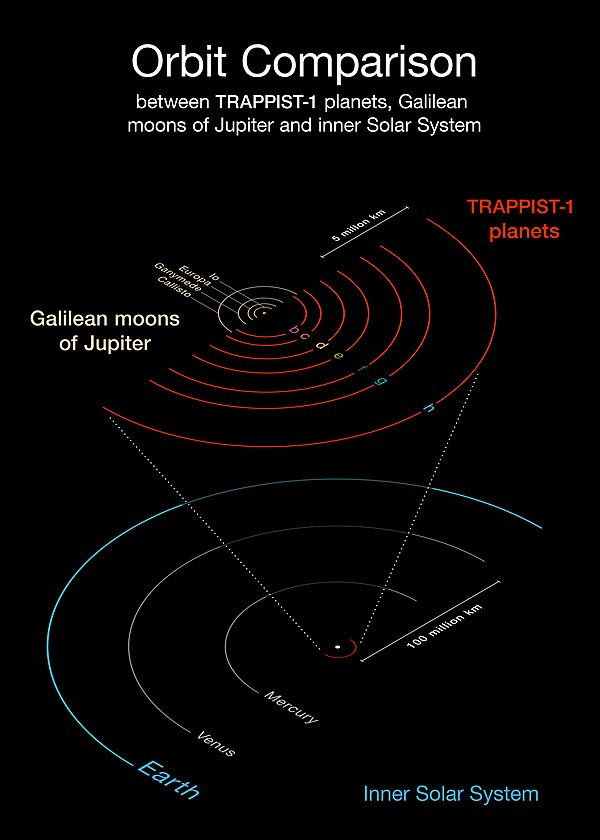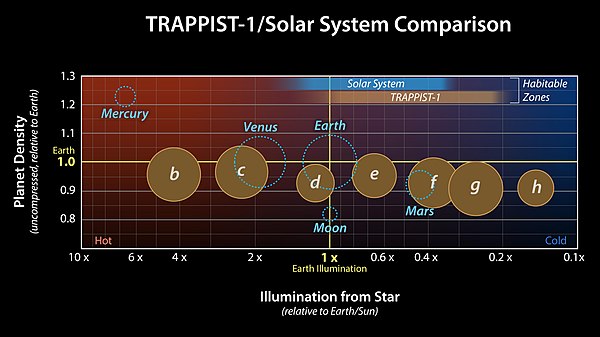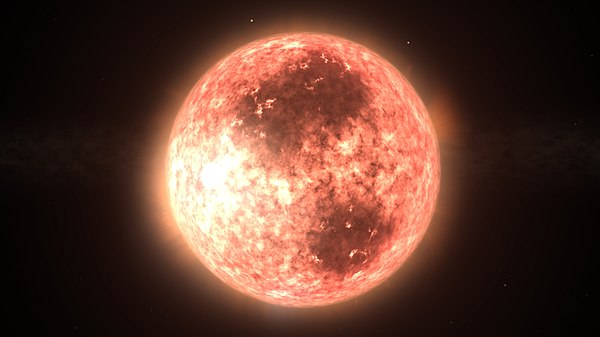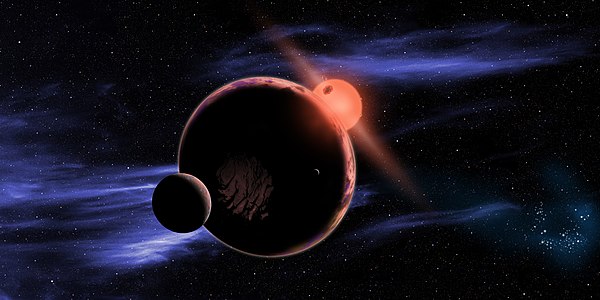TRAPPIST-1
Videos
Page
TRAPPIST-1 is a cool red dwarf star with seven known exoplanets. It lies in the constellation Aquarius about 40.66 light-years away from Earth, and has a surface temperature of about 2,566 K. Its radius is slightly larger than Jupiter and it has a mass of about 9% of the Sun. It is estimated to be 7.6 billion years old, making it older than the Solar System. The discovery of the star was first published in 2000.

TRAPPIST-1 is within the red circle in the constellation Aquarius.

True-colour illustration of the Sun (left) next to TRAPPIST-1 (right). TRAPPIST-1 is darker, redder, and smaller than the Sun.

Comparison of the orbits of the TRAPPIST-1 planets with the Solar System and Jupiter's moons

Relative sizes, densities, and illumination of the TRAPPIST-1 system compared to the inner planets of the Solar System
Red dwarf
Videos
Page
A red dwarf is the smallest kind of star on the main sequence. Red dwarfs are by far the most common type of fusing star in the Milky Way, at least in the neighborhood of the Sun. However, due to their low luminosity, individual red dwarfs cannot be easily observed. From Earth, not one star that fits the stricter definitions of a red dwarf is visible to the naked eye. Proxima Centauri, the star nearest to the Sun, is a red dwarf, as are fifty of the sixty nearest stars. According to some estimates, red dwarfs make up three-quarters of the fusing stars in the Milky Way.

Proxima Centauri, the closest star to the Sun, at a distance of 4.2 ly (1.3 pc), is a red dwarf.

Gliese 623 is a pair of red dwarfs, with GJ 623a on the left and the fainter GJ 623b to the right of center.

Illustration depicting AU Mic, an M-type (spectral class M1Ve) red dwarf star less than 0.7% the age of the Sun. The dark areas represent huge sunspot-like regions.

An artist's impression of a planet with two exomoons orbiting in the habitable zone of a red dwarf.